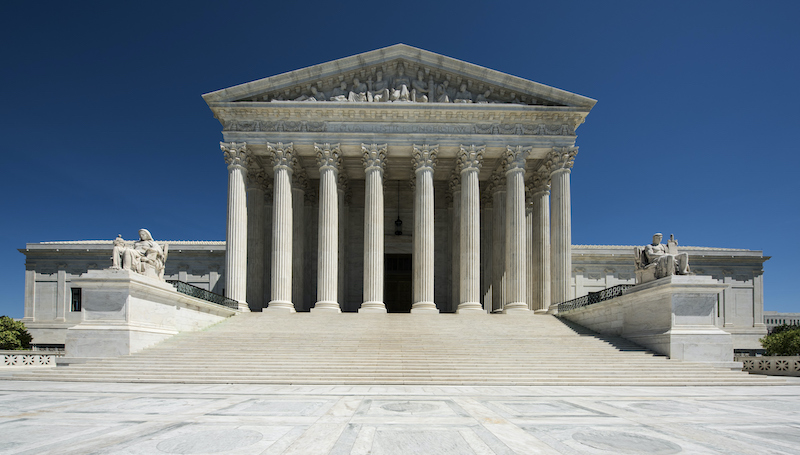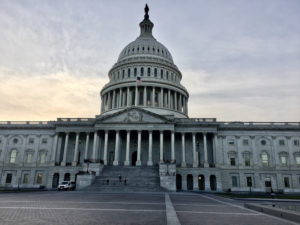
A recent Supreme Court decision will have major implications for regulatory authority over tribal land in Oklahoma.
“On the far end of the Trail of Tears was a promise.”
In 1997, the state of Oklahoma convicted Jimcy McGirt of heinous crimes and sentenced him to 1,000 years plus life in prison. Because he is an enrolled citizen of an Indian nation, however, he argued in post-conviction proceedings that Oklahoma lacked jurisdiction to prosecute him, as his crimes allegedly occurred in Indian Country on the Muscogee (Creek) Reservation as set out in treaties between the United States and the Creek Nation.
Reviewing his conviction, the U.S. Supreme Court stated: “Today we are asked whether the land these treaties promised remains an Indian reservation for purposes of federal criminal law. Because Congress has not said otherwise, we hold the government to its word.”
The Court’s 5-4 decision in McGirt v. Oklahoma landed like a bombshell.
Writing for the majority, Justice Neil Gorsuch held that the boundaries of the Muscogee (Creek) Nation Reservation—as defined in the Creek Nation’s 1866 treaty with the United States—remain intact. Overnight, the Creek Reservation was recognized as encompassing more than 3 million acres. More than 1.8 million Oklahomans found out they live on an Indian reservation, including 400,000 people in Tulsa. The entire area is now legally “Indian Country.”
This case has enormous implications that will involve the Muscogee (Creek) Nation as well as other Indian tribes in Oklahoma and across the country. Those tribes can expect future negotiations, litigation, and perhaps legislative efforts to address the criminal, civil, adjudicatory, and regulatory issues that will arise.
In fact, since the McGirt decision, Oklahoma state courts have already re-recognized the existence of four other large Indian reservations, and the continuing existence of at least three other Indian tribes’ reservations in Oklahoma is currently being litigated.
In McGirt, the Court referred to the test outlined in a 1984 case, Solem v. Bartlett, designed to determine whether an Indian reservation has been diminished in size or completely disestablished. In Solem, the Court restated the commonly accepted principles that only the U.S. Congress can diminish or disestablish a reservation, and that congressional intent to do so “will not be lightly inferred.”
The Solem Court set out what scholars and lower courts assumed was a three-step analytical process for courts to apply when faced with diminishment and disestablishment questions.
First, courts must ask: Did Congress clearly evince an “intent” to change a reservation’s boundaries? The Court explained that if Congress uses statutory language that makes “explicit reference to cession” or otherwise uses “language evidencing the present and total surrender of all tribal interests,” such language “strongly suggests” that Congress meant to diminish or disestablish a reservation.
Second, if Congress’s intent was unclear given the controlling statute or statutes at issue, a court should examine contemporaneous historical events to determine whether there was a widely held understanding that the “reservation would shrink.”
Finally, the Court also recommended—albeit to “a lesser extent”—that courts consider examining subsequent events, including: how Congress and the Bureau of Indian Affairs treated the lands in question; “who actually moved onto opened reservation lands;” and the “subsequent demographic history of opened lands.” This third step of Solem has always been problematic and unusual because, with it, the Court endorsed consideration of events that may have occurred decades after a law was enacted to determine congressional intent on the day the law was passed.
The McGirt Court, however, expressly ignored the second two steps of the Solem test. Justice Gorsuch applied a textualist approach, beginning and ending his analysis by reviewing the express language of the relevant acts of Congress. The majority found no explicit or clear statement from Congress that it intended to disestablish the Creek Reservation. In fact, as Justice Gorsuch concluded, the opposite was true, and the relevant statutes showed that Congress did not intend to change the reservation boundaries.
The majority dismissed Oklahoma’s and the dissent’s arguments based on Solem steps two and three, finding those arguments irrelevant since the statutory language clearly had not disestablished the reservation. The Court enforced the United States’ treaty promises and held that the Muscogee (Creek) Nation reservation was never disestablished.
In my opinion, McGirt is one of the most significant and impactful Indian law decisions the Supreme Court has rendered at least in the past century. McGirt portends some of the most substantial legal, political, and societal changes for a state and the Indian nations therein that any Supreme Court case has ever created.
McGirt is especially significant considering the ramifications and repercussions that have already ensued and that will ensue.
For example, within days of the McGirt decision, the Attorney General of Oklahoma and five major Oklahoma tribes announced that they had reached an agreement-in-principle about the future of criminal and civil legal proceedings. But after the decision, at least three of these Indian nations rejected the preliminary agreement-in-principle. The Muscogee (Creek) Nation instead chose to defend its newly re-recognized reservation, as well as the legal authority that accompanies McGirt’s recognition.
Under McGirt, the Muscogee (Creek) Nation may now exercise criminal, civil, regulatory, taxation, and adjudicatory jurisdiction—as defined by tribal and federal laws—over three million acres in Oklahoma, where the state’s jurisdiction will now be limited. In addition, the other Indian nations in Oklahoma can exercise similar governmental powers over their newly re-recognized reservations.
These new exercises of tribal authority will be consistent with Supreme Court case law, which has long held that state law and state jurisdiction does not apply in Indian Country over tribal governments and Indian peoples.
For example, in 1832, the Court in Worcester v. Georgia decided that the “laws of Georgia can have no force” in Cherokee Nation territory—although the Court walked back this rule somewhat in the 1960s and 1970s.
In 1959, the Court held in Williams v. Lee that Indian nations and their citizens have the power and the right “to make their own laws and be ruled by them.” Then, in 1973, the Court held that a state could not impose its income tax on a tribal citizen who lived and worked on a reservation in McClanahan v. Arizona State Tax Commission.
And, finally, in 1975, the Court stated in United States v. Mazurie that tribes possess “attributes of sovereignty over both their members and their territory.”
Now, with McGirt’s recognition that so much land is properly Indian Country, Supreme Court precedent means that Oklahoma and the Indian nations and peoples located there will have to negotiate and settle numerous legal issues, or else litigate and legislate those issues in the decades to come.
This essay is part of a series entitled Native Peoples, Tribal Sovereignty, and Regulation.




